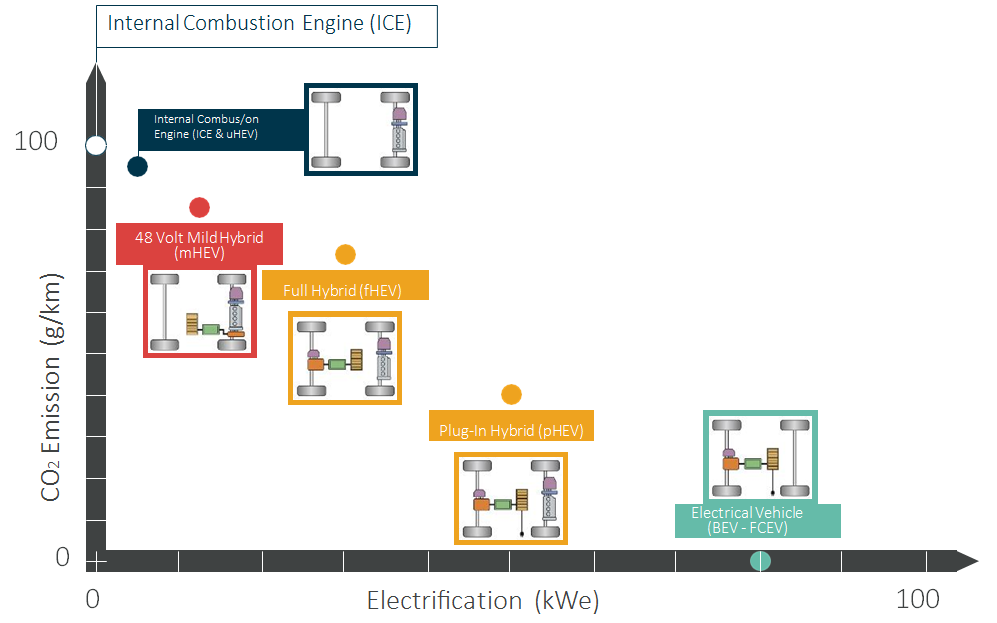助力 EVAP 适用于全混合动力 电动汽车
作者:Laurent Otte,Melexis
最近世界许多地区的气温都创下了记录,格陵兰岛的冰在融化,阿拉斯加的永久冻土层在以前所未有的速度退化。据气象学家称,2020年将成为自开始测量以来最热的一年。这些只是表明我们面临重大气候变化的几个例子。

为了抑制地球平均温度上升,人们正在尝试减少全球温室气体的排放。已进行了多项研究,以确定人为因素导致温室气体水平的增加。研究结果因地区而有所不同,但初略估计,交通业占排放总量的 20%(其中汽车业占 15%,飞机和船舶业约占 5%),发电/能源生产占 30%,制造业/工业/建筑业占 20%,住宅/商用建筑占 15%,农业/林业占 10%。
以交通为重点的立法已经推动汽车工业在二氧化碳排放(主要的温室气体之一)方面投入更多精力开发更环保的推进技术。城市人口的增加意味着越来越多的人直接暴露在汽车污染之下,再加上柴油排放丑闻(柴油车门)等事件,使得汽车成为人们关注的焦点。然而,限制全球变暖必须从整体上来看,包括二氧化碳排放的所有来源,而且发电与汽车工业有着明显的联系。
汽车电气化正在被广泛采用,作为解决从油箱到车轮的二氧化碳排放问题的一种手段。绿色能源在某种程度上对从油井到车轮的二氧化碳排放会带来好处,但是世界上许多地区还没有准备好用绿色能源来驱动纯电动汽车。将世界范围内的汽车完全转换为纯电动汽车还会带来管理制造电池所需的矿产资源的问题。因此,从对比二氧化碳排放和矿物资源保护方面出发,混合动力技术作为折中方案具有显著的吸引力。

混合动力技术有许多不同的种类,从轻度混合动力(在加速等特定过渡阶段使用电力)到全混合动力(依靠电动机在较短的城市日常通勤距离中完全驱动汽车)。
新技术带来新挑战,全混合动力系统就是一个很好的例子。尽管柴油与汽油相比在二氧化碳排放方面的优势是众所周知的,但在柴油门丑闻后,政府对柴油的处罚将使汽车厂商把重点从混合动力转向汽油。然而,汽油是一种比柴油更不稳定的燃料。汽油蒸汽会在油箱中积聚,防止其泄漏到大气中尤其重要。众所周知,纯内燃机汽车也面临着这一挑战,世界部分地区通过强制使用燃油蒸发排放控制(EVAP)系统来解决该问题。
EVAP 系统包括将蒸汽储存在碳罐的过滤器中,并定期清洗碳罐以防止其饱和,从而将储存的燃料带入燃烧室。压力传感器用于此类系统,以确保密封,并在任何蒸汽泄漏的情况下提供警报。然而,在全混合动力的情况下,内燃机会长期闲置。随着每日通勤距离的缩短和炎热天数的逐年增加,油箱内积聚过多燃料蒸汽的情况更为常见,罐体将无法有效应对这种情况。因此,在全混合动力中,将油箱与碳罐隔离变得至关重要。压力传感器不仅能够检测到微小的燃料蒸汽泄漏,而且能够测量和应对密封罐内不断增加的压力水平,这是EVAP在全混合动力车型成功的关键。
针对这种需求,MLX90821 应运而生。它可以用于纯内燃机的经典 EVAP系统,并在重新校准后,还可以监测全混合动力汽车密封罐中不断增加的燃料蒸汽压力。在独立于杂交级别的单一概念上实现传感器的标准化可以帮助 OEM 满足立法的最后期限。如 2019 年中国颁布的“国六”排放标准。

解决全球变暖问题需要多方面的努力,比如从习惯开始,通过减少肉类消费减少对农业部门的影响,通过消费当地产品减少海洋运输,或者以比飞机更环保的方式旅行。
只有有强大的政治意愿,优先考虑全球范围内的问题,寻找解决这些问题的共同途径,包括解决所有温室气体来源,才能找到全面的解决方案。最近的政治形势是,各国政府主要关注地方和国家议题,而不是采取与气候变化相关的解决方案。
不过,从好的方面来看,技术也能带来变化。人类富有创造力,在不断开发应对严峻挑战的解决方案。最近的一个例子是,我们的工程师团队将传感器引入市场,这些传感器可以帮助部署全混合动力汽车,这对于减少汽车对全球变暖的影响是必要的。这是受启发的工程,带来全新的解决方案,用于帮助解决未来的挑战。



